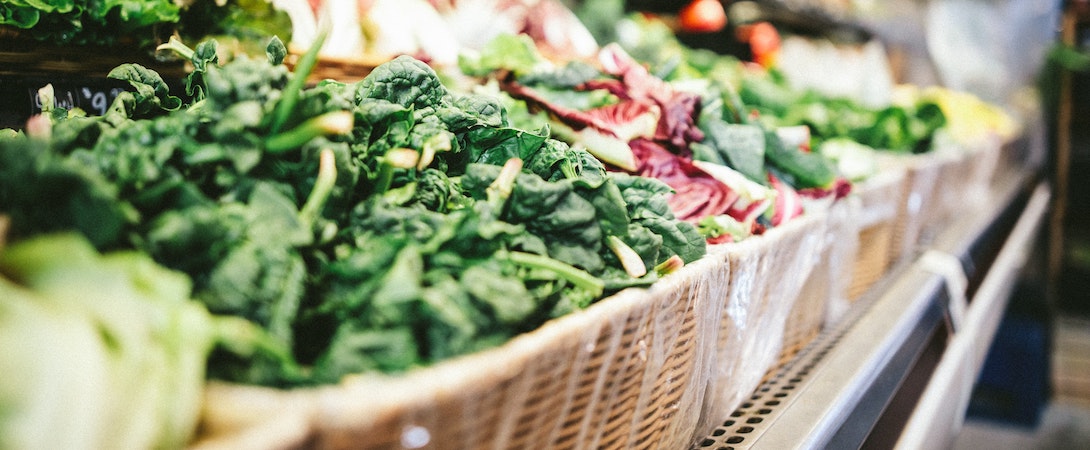Food Waste: A Valuable Channel To Help Animals And The Environment
The U.S. Environmental Protection Agency (EPA) reports that more than one-third of the food produced in the U.S. never gets eaten. This “food waste” is often perceived as a consumer issue, but it can happen at every stage of the supply chain, from production to consumption. Wasting food costs valuable resources, leads to unnecessary environmental strain, and causes more farmed animals to be killed. Although plastic waste regularly attracts headlines, food waste is actually the most common material landfilled and incinerated in the U.S. Because food production requires a lot of resource and energy use, mitigating the amount of food lost and wasted (FLW) can also help mitigate climate change.
The EPA recently published a report aimed at reviewing the environmental impacts of U.S. food waste. The authors argue that current food system trends are concerning, and changes are essential for the country to meet its Paris Agreement climate targets. The authors estimate between 223 to 438 kg (492 to 1,032 lbs.) of U.S. food is lost or wasted per person, per year, during all stages of the food supply chain. This uneaten food generates unnecessary greenhouse gas (GHG) emissions and uses up agricultural land, water, pesticides, fertilizers, and energy for nothing. Reducing FLW can also help feed the growing population more sustainably, as it could lessen the need for new food production. In fact, wasted food in the U.S. contains enough calories to feed more than 150 million people each year.
Food wasted further along the supply chain (e.g. at home or in restaurants) carries more impacts than food lost early on (e.g. on the fields). Currently, the U.S. wastes more food and more food per person than most other countries. The environmental impact is also greater because the U.S. wastes more food on the demand side of the supply chain and more animal products than the global average. Worldwide, the population is estimated to reach nine billion people by 2050. Demand-side measures in the U.S. and elsewhere, such as reducing FLW or encouraging dietary shifts can help manage our current food supply even as more land is needed to feed future consumers.
It is no secret that animal products typically require much more land, water, fertilizer, energy, and emit more GHGs compared to plant-based alternatives. Of the land required for U.S. food production, more than 3 million km2 are used as pasture for grazing compared to 830,000 km2 used for growing crops. Grazing land requires fewer environmental resources than cropland, but 63% of cropland is used to grow feed for farmed animals. Cow flesh used for food (beef) is notoriously resource-demanding, even when compared to other animal products. On the plant side of things, about 80% of vegetable crops and 94% of orchard fruit and nut crops are irrigated in the country, yielding high water demands. Animal products can require even more water per unit of food when you account for animal feed irrigation. Likewise, more than half of the fertilizer used in the U.S. goes toward crops used as animal feed. For example, one study in 2018 found that almost 60% of phosphorus (a finite fertilizer resource) was applied to feed grains, oilseeds, and hay used for animal products that were ultimately wasted.
On the other hand, animal products appear to have lower domestic food loss rates than plant foods or marine animal products. Across all stages of the supply chain, fruits and vegetables are wasted in the greatest amounts, followed by dairy and eggs. Although animal products represent only 30% of U.S. FLW in terms of quantity lost, they account for around two-thirds of total agricultural land use associated with food waste. Animal products also embody the largest amount of wasted energy in food production. Specifically, they account for 60% of cumulated energy loss, with meat topping the list at 26%. In terms of GHG emissions, wasted animal products, particularly ruminant-based FLW (i.e., dairy and beef), result in the majority of total emissions across the supply chain. When considering only retail and consumer FLW, animal products account for 73% of GHG emissions while making up only 23% of the calories and 33% of the weight.
As world population and incomes rise, pressures on the environment from the food system will increase as well. Studies project that food demand could grow by more than 50%, and the demand for more resource-intensive animal products could rise by nearly 70%. Reducing FLW is one pathway toward more sustainable agricultural systems. The authors suggest three guiding principles to maximize the environmental benefits of reducing FLW:
- Focus on prevention rather than food waste recycling: Because a lot of food waste happens in the production part of the supply chain, it’s important to reduce the quantity of food produced versus creating a surplus and recycling what doesn’t get used.
- Make sure we reduce as much FLW from households and restaurants as possible: When it comes to food waste, most of the environmental harms accumulate through the supply chain. Therefore, addressing waste later on in the supply chain, especially on the consumption side, can make a big difference.
- Focus on reducing FLW of the most resource-intensive foods: This includes animal products and fruits and vegetables, two categories that cause the most environmental impact in food production.
Addressing waste is a critical issue that will only become more important as the population grows and requires more food. Many advocates are already aware of the welfare harms of killing farmed animals only to throw their products away. This report offers a new perspective by highlighting other reasons why wasting animal products is harmful. In other words, the food waste approach is yet another argument animal advocates can use when encouraging animal product reduction.

















